This entry includes a walking tour! Take the tour.
Introduction
Text-to-speech Audio
Hanna's Town served as the site of the first English courts west of the Allegheny Mountains and first seat of government for Westmoreland County, established in 1773. Hanna's Town was an outpost for settlers, travelers, and those seeking law or court interventions. In May 1775, citizens of Westmoreland County drafted the Hanna’s Town Resolves condemning British actions at the Battles of Lexington and Concord and calling for a county militia. Throughout the Revolutionary War, Hanna’s Town served as a recruitment center for the county militia as well as the Continental Army. On July 13, 1782, Hanna’s Town was burned by British and Seneca forces in one of the last conflicts of the Revolutionary War. Today, Historic Hanna's Town offers guided tours of the reconstructed historic site, educational programs, and special events. Historic Hanna's Town is a Westmoreland County park managed by the Westmoreland Historical Society, which bases its operations at the Westmoreland History Education Center on site.
Images
Visitors to Historic Hanna's Town can enjoy guided tours from May - October and educational programs and events throughout the year.
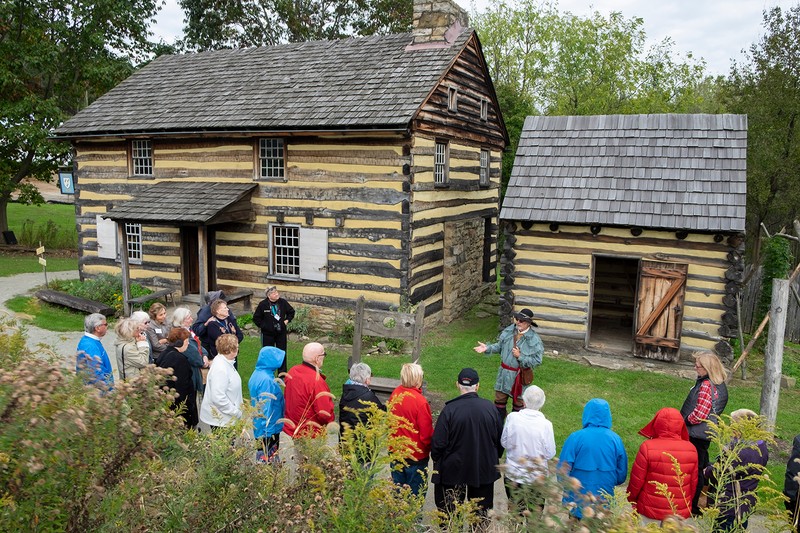
Hanna's Town reenactment of court proceedings
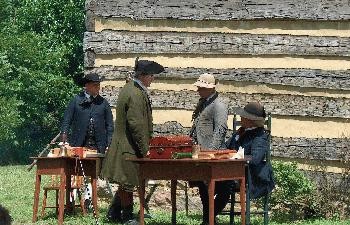
Re-enactors depicting 18th century dress and daily life.
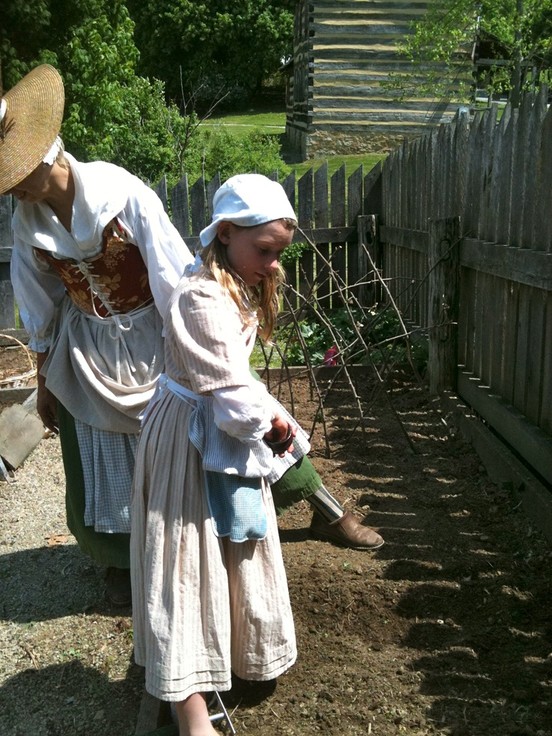
Re-enactors inside the fort.
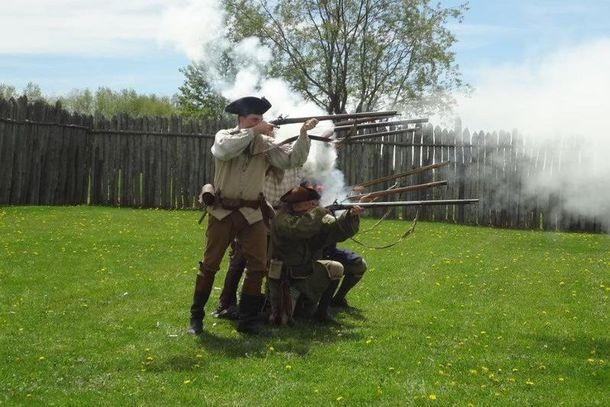
The authentic eighteenth century Conestoga Wagon.
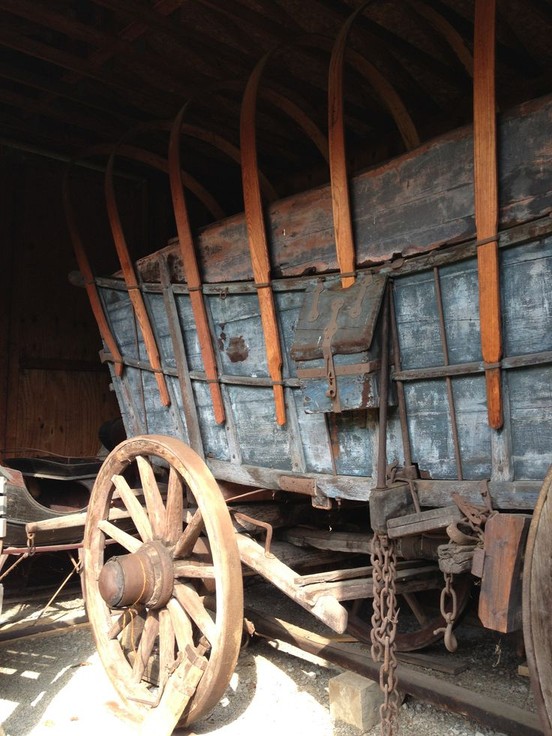
Backstory and Context
Text-to-speech Audio
The land that later became Hanna’s Town has a long history. It was originally settled by indigenous Monongahela Peoples who flourished in the Ohio Valley prior to European colonization in the early 17th century, evidenced by archaeological material discovered at the historic site. The Iroquois Six Nations (Mohawk, Oneida, Onondaga, Cayuga, Seneca, and Tuscarora) lived close to the present-day New York/Pennsylvania border. The Shawnee and Delaware (Lenape) lived in the western Ohio River Valley and upper Mississippi Valley. In the 18th century, what is now western Pennsylvania was considered multi-tribal hunting and trade territory, with major trails crossing through the region.
European colonization intensified struggles between the British, French, and Native Americans over claim to land, particularly the Forks of the Ohio at modern-day Pittsburgh. During the French and Indian War, British general John Forbes constructed the Forbes Road to move troops over the Allegheny Mountains to capture Fort Duquesne from the French in 1758. The British erected Fort Pitt and established a British stronghold of the region. The Forbes Road soon became a travel route for European settlers moving west.
The Treaty of Fort Stanwix (1768) transferred land from the Iroquois (Haudenosaunee) to the Penn Family. The “New Purchase,” as it was called, included northeastern PA and southwestern PA, following the Allegheny Mountains. The New Purchase allowed an Irish farmer and businessman named Robert Hanna to acquire land and establish a settlement west of the Allegheny Mountains along the Forbes Road.
Originally from County Down, Northern Ireland, Robert Hanna immigrated to York County, Pennsylvania, with his family when he was a young child. He married Elizabeth Kelly of Lancaster County in 1762, and the couple later had four daughters. In 1769, Robert Hanna applied for 337 acres of land in what was then Cumberland County, Pennsylvania. Sometime after, Robert, Elizabeth, and their daughter Jane, traveled to the property and settled Hanna’s Town. Robert Hanna leased lots to settlers predominately of Scots-Irish descent, who built log homes and engaged in subsistence farming. Some residents also arrived as indentured servants of Scots-Irish descent or as enslaved people of African descent. According to archaeological research, it is estimated that Hanna’s Town had at least thirty homes, three taverns, many outbuildings, and a stockade fort.
When Hanna’s Town was founded in the early 1770s, Pennsylvania was proprietary colony of Great Britain. A growing population on the frontier, the need for law and order, and border disputes with Virginia led to the establishment of new counties in western Pennsylvania. Robert Hanna was involved in establishing Bedford County in 1771, and quickly sought an additional southwestern county. Westmoreland County, encompassing most of southwestern Pennsylvania, was formed on February 26, 1773, with Hanna’s Town selected as the county seat. The first court session was held on April 6, 1773, making Hanna’s Town the first site of English courts west of the Allegheny Mountains. Court sessions were held four times a year in “quarter sessions,” and addressed legal matters ranging from license applications to disputes to crimes including theft and treason. Hanna’s Tavern served as a courthouse, and trial were also held outdoors. As the county seat, Hanna’s Town attracted settlers, travelers, and those seeking justice on the Pennsylvania frontier.
In April 1775, British soldiers fired on American militia in Lexington and Concord, Massachusetts, sparking the Revolutionary War. Word made its way to the Pennsylvania frontier in the coming weeks. Though far from the revolutionary epicenters of Boston or Philadelphia, the people of Pennsylvania were still engaged with debates around British rule over the colonies. On May 16, 1775, in response to Lexington and Concord, citizens of Westmoreland County drafted and approved the Hanna’s Town Resolves. The Resolves protested the injustices of the British Parliament while remaining loyal to George III, the English monarch. The Resolves also led to the creation of a county militia to defend the region from attacks. Hanna’s Town later served as a recruitment center for the county militia along with the Continental Army.
On October 19, 1781, British General Cornwallis surrendered to American forces at Yorktown, Virginia, yet the war was not over in the west. The western campaigns of the Revolutionary War were shaped by shifting borders, betrayed treaties, raids on American settlements, and massacres at Native American villages. This violence continued well into 1782. In May, Seneca and their British allies left Fort Niagara to launch an assault on western Pennsylvania to weaken the region and push settlers east. Hanna's Town was attacked on July 13, 1782, while court was in session. Most of the town was burned and destroyed, though almost everyone in town survived, taking refuge in the fort that was spared in the attack. This event is considered one of the final conflicts of the Revolutionary War. Hanna’s Town never recovered from the attack or the untimely death of Robert Hanna in 1786, after which the county seat was moved to Greensburg.
The land moved through several hands until purchased in by the Steel family at a sheriff’s sale in the 1820s. Several generations of the Steel Family farmed the land for about 140 years. In 1969, the property was purchased by Westmoreland County in collaboration with the Westmoreland Historical Society. The farmland preserved artifacts and archaeological features that have become an invaluable resource for the study of early American life. Reconstruction efforts of the site began in the 1970s and the site was added to the National Register of Historic Places.
Today, Historic Hanna's Town is a county park and historic site interpreted by the Westmoreland Historical Society, which has its headquarters on the property. Historic Hanna's Town encompasses the reconstructed Hanna's Tavern, fort, and jail; five historic log buildings moved from other properties; an authentic Conestoga wagon; along with walking paths, an 18th century kitchen garden, and native pollinator gardens. The Westmoreland History Education Center includes a research library, museum shop, and exhibit gallery with changing exhibits. Programs and events are offered throughout the year, including Frontier Court Days, where visitors can witness reenacted court cases once held at Hanna's Town.
Sources
Carlisle, Ronald C., Ph. D., An Overview of Prior Historical Research on Hanna’s Town, The First County Seat of Westmoreland County, Pennsylvania, Volume 1 of 2: Narrative Report, Brown Carlisle Associates, Inc., Carnegie, PA, February 2005.
"Hanna's Town." Westmoreland Historical Society. Accessed January 9, 2021. https://www.westmorelandhistory.org/hannas-town/
Westmoreland County Historical Society. “Hanna’s Town Tour Manual." 2020.
O'Neill, Brian. "Here's to Hanna's Town, a Happening Historical Site." Pittsburgh Post-Gazette. March 3, 2016. Accessed November 30, 2016. https://www.post-gazette.com/opinion/brian-oneill/2016/03/03/Brian-O-Neill-Here-s-to-Hanna-s-Town-a-happening-historical-site/stories/201603030056
courtesy Pamela Curtin, Westmoreland Historical Society
